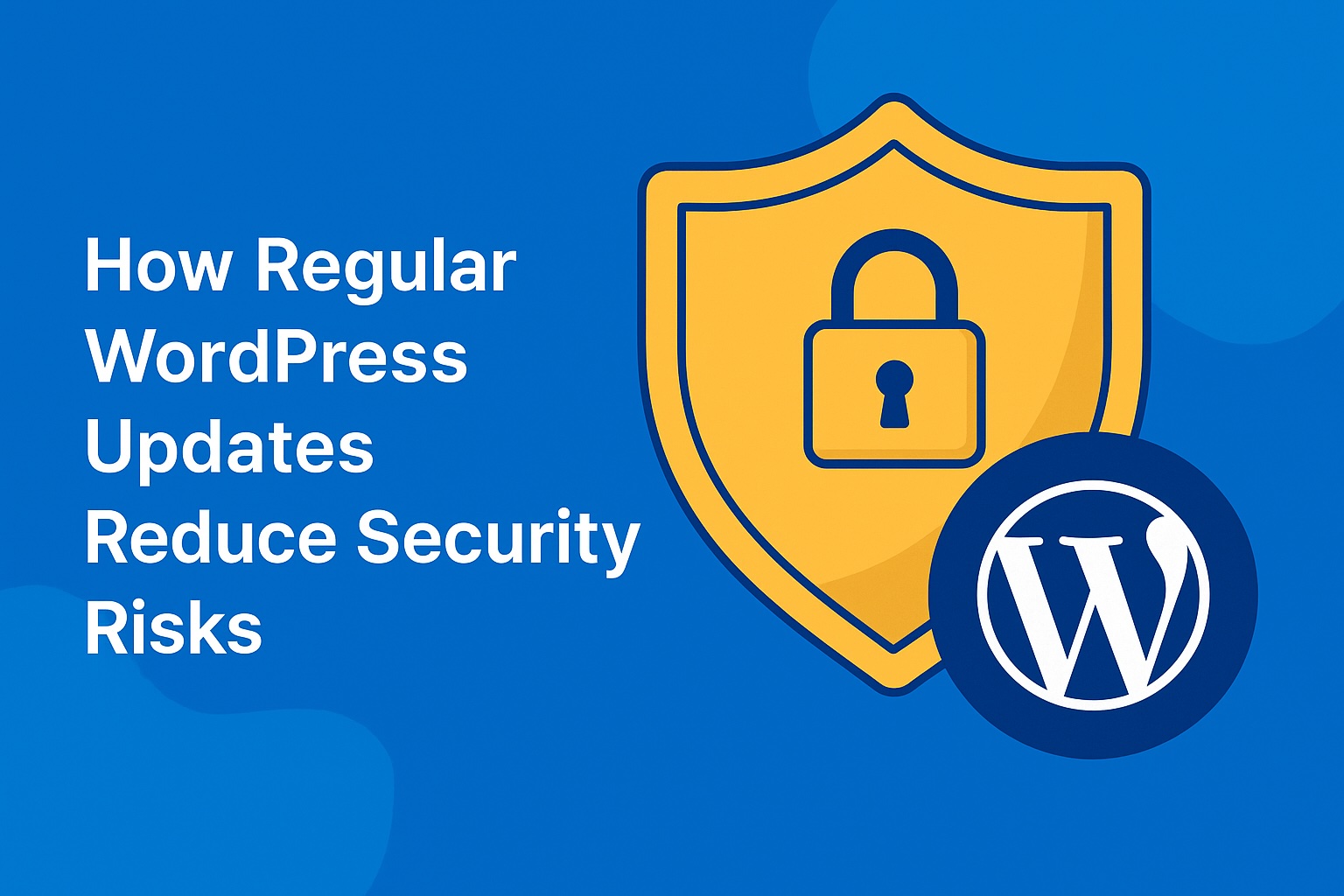Introduction
WordPress powers over 40% of the web, making it a prime target for attackers. While the platform’s open-source nature ensures continuous innovation, it also means vulnerabilities are discovered frequently. For enterprise websites, neglecting updates is one of the fastest ways to invite risk. This article explores how regular updates reduce security risks, the consequences of delayed patching, and the best practices enterprises should adopt in 2025.
Table of Contents
1. Why WordPress Updates Matter
Every update, whether to the core, plugins, or themes, includes patches for newly discovered vulnerabilities. Attackers often scan the internet for outdated WordPress installations, exploiting them automatically.
- Core updates: Address critical security issues.
- Plugin and theme updates: Fix bugs and remove exploitable code.
- Third-party integrations: Close loopholes in APIs and dependencies.
External reference: WordPress.org – Security overview
2. Common Vulnerabilities Fixed by Updates
Failing to update often leaves sites exposed to:
- SQL injection – attackers inject malicious queries into forms or URLs.
- Cross-site scripting (XSS) – injecting scripts that run in the browser of your users.
- Privilege escalation – gaining admin rights through plugin flaws.
- Remote code execution (RCE) – complete control over a site’s server.
External reference: OWASP Top 10 Web Application Risks
3. The Cost of Delayed Updates
For enterprises, the cost of ignoring updates can be significant:
- Downtime: Even a few minutes offline can translate into thousands of dollars lost.
- Reputation damage: Customers lose trust if a website is compromised.
- Regulatory risk: Data breaches can trigger fines under GDPR, CCPA, or other laws.
According to IBM’s 2024 Data Breach Report, the global average cost of a data breach is $4.45 million. Many breaches are caused by unpatched systems.
External reference: IBM Cost of a Data Breach Report
4. Best Practices for Updating WordPress
Enterprise organizations should treat updates as structured processes, not ad-hoc tasks.
a) Use a Staging Environment
Always test updates in a staging copy before pushing them live. This prevents compatibility issues from breaking production.
b) Automate Minor Security Patches
Enable automatic updates for minor releases and security patches. These are low-risk and address urgent vulnerabilities.
c) Review Plugins and Themes Quarterly
Remove unused plugins and replace outdated ones. A smaller attack surface means fewer risks.
Learn how we manage structured patching in our WordPress Maintenance and Support services.
5. Enterprise Case Study: Update Delays vs. Proactive Patching
A European media company running a high-traffic WordPress portal delayed a plugin update by six weeks. During that time, attackers exploited the vulnerability, defacing the homepage and injecting spam links. Cleanup required three days of downtime.
In contrast, an e-commerce company on WordPress VIP had a proactive maintenance schedule. A similar vulnerability was patched within 24 hours, preventing exploitation and ensuring compliance with PCI DSS standards.
Read more about our enterprise experience on the WordPress VIP Partner page.
6. Updates and Compliance Requirements
For many enterprises, compliance frameworks require proof of timely patching.
- GDPR: Organizations must protect personal data “by design and by default.”
- SOC 2: Requires documented processes for patch management.
- ISO 27001: Demands continuous risk management.
Learn more about ISO/IEC 27001:2022 overview
Explore more on compliance in our blog insights.
7. Tools That Simplify Updates in 2025
- WP-CLI: Command-line interface for bulk updates.
- Composer: Manages dependencies across environments.
- Enterprise CI/CD pipelines: Automate testing and deployment of updates.
Adding monitoring tools ensures that updates don’t introduce regressions in performance or functionality.
8. The Future of WordPress Updates
By 2025, the WordPress ecosystem is moving toward more automated and predictive update systems. Features like real-time vulnerability scanning, automated rollback after failed updates, and AI-based risk assessment are becoming industry standards.
Conclusion
Regular WordPress updates are one of the simplest yet most effective ways to reduce security risks. For enterprises, they are not optional – they are essential to protecting users, meeting compliance standards, and maintaining reputation. Organizations that adopt structured, proactive update policies will stay ahead of attackers and minimize the cost of breaches.







